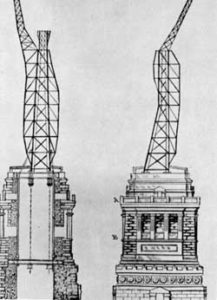Gustave Eiffel, engineer and architect, called “the magician of iron,” was known in 19th century France for building bridges and solving intricate engineering problems. We know Eiffel today as the man who built the Eiffel Tower, the iconic symbol of Paris and of France. But the Eiffel Tower was not the first tower that Gustave Eiffel built. In 1881, he began work on a tower that cannot be seen from the outside. It is the internal framework and support system for the Statue of Liberty.
Eiffel owned his own company when a world’s fair, to be called the 1889 Exposition Universelle, was planned. The fair would commemorate the 100th anniversary of the French Revolution. A centerpiece for the fair that would attract lots of attention was needed.
Two of Eiffel’s engineers designed a tower they thought would be a fitting centerpiece. At first Eiffel was unimpressed. But when his master architect added decorative features to the tower design including: a cupola, arches, and a glass pavilion, Eiffel thought the design would work.
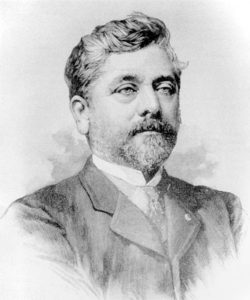 Gustave Eiffel
Gustave Eiffel
A contest was held to award a commission to build the fair’s centerpiece. It seemed from the start that the contest was set up to make Eiffel the winner. The design restrictions met all of the Eiffel Company’s designs.
Eiffel was given approval to build the tower on the Champs-de-Mars, a green space near the Seine River. But the amount of money awarded for construction was significantly less that what was needed.
Eiffel had to find investors. Fortunately, the French government gave him the rights to the tower for twenty years. He would keep all the money generated and repay his investors.
When the tower design was announced, it was immediately discounted as a “hateful column of bolted sheet metal” and a “ridiculous tower dominating Paris like a gigantic black smokestack.” The French arts and intellectual community was unhappy. But construction began in January 1887, despite the protests.


The foundation was completed in June. The iron tower could now be built. Over 5,000 design drawings were needed. And over 18,000 different parts were manufactured off site. They were moved by horse-drawn carts. 132 ironworkers constructed the tower’s three levels. Construction took less than two years.
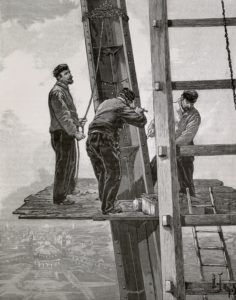
In March 1889, most of the work was finished. Eiffel celebrated by climbing to the top of the tower. He climbed the 1,710 steps since the elevators were not yet operating. He raised the French flag to a 25-gun salute below.
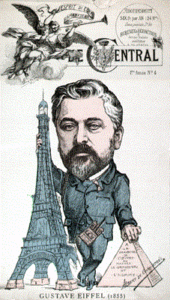
The tower stood 984 feet tall making it the tallest structure in the world — taller than the Washington Monument, the previous record holder. The record held for 41 years until 1930 when the Chrysler Building was built. Of course, now there are many larger structures.
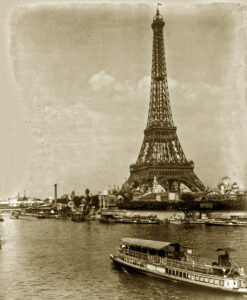
Today, just under 7 million people a year visit the Eiffel Tower, making it the most visited paid monument in the world.
If you like this post, then please consider sharing it and leaving a comment below. Thank you! Barbara Lowell, Children’s Author
You may like: Books For Kids Statue of Liberty https://barbaralowell.com/books-for-kids-statue-of-liberty
To learn more visit: http://visiteiffeltower.com/construction/
A Book For Kids:


